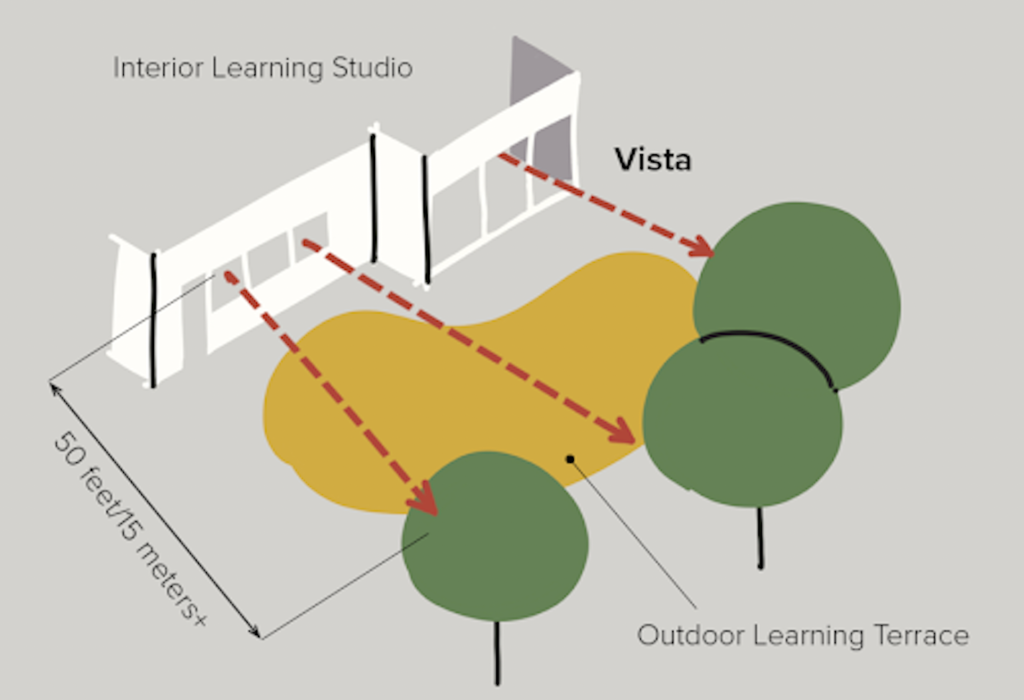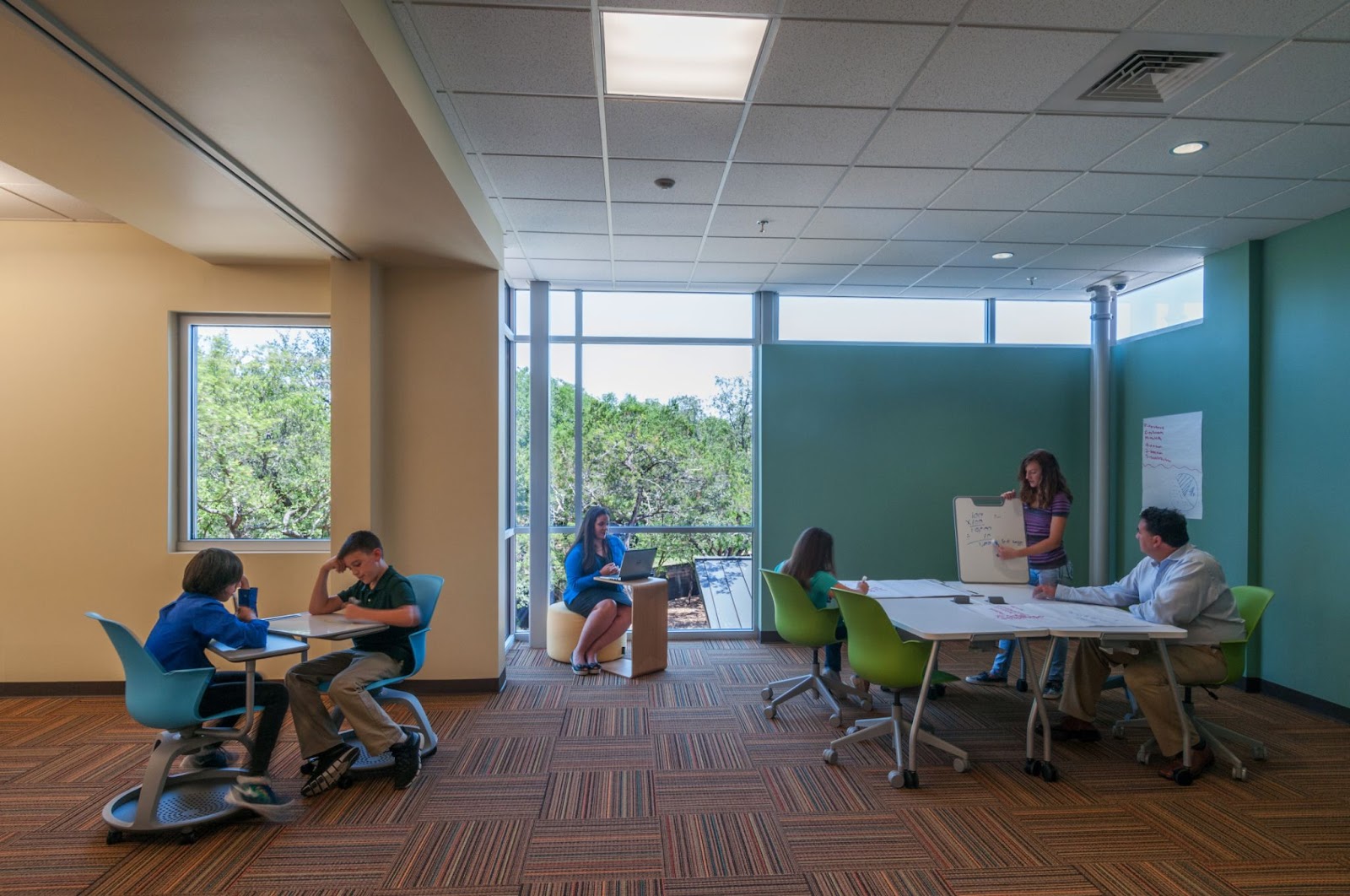School With a View: Vistas, Movement, and Learner Well-being
Key Points
-
Because the eye is most relaxed when looking at objects in the distance, vistas are an important design feature for eye health and well-being.
-
Vistas can also be designed to help define and order movement through a space, making paths intuitive which, in turn, contributes to a sense of placemaking and security.

I recently visited a high school and asked a teacher why the blinds were closed. His reply, “to prevent students from being distracted,” is one that we’ve heard over and over again in our school visits around the world. I then asked the students how they felt about it. One young woman replied, “It’s suffocating.”
For teachers that were trained to direct learning and maintain order, the need to control students’ attention is a natural one, but in a learner-centered world, it’s highly limiting and even unhealthy. As the young woman boldly stated, not being able to look outside can be downright suffocating. While we all understand the essential need for oxygen, the need to periodically change one’s focal length for eye health and well-being is less well-known but no less important.
Research has shown that the eye is most relaxed when viewing distant images. As described in the Physics of the Eye, “Since light rays from a nearby object can diverge and still enter the eye, the lens must be more converging (more powerful) for close vision than for distant vision. To be more converging, the lens is made thicker by the action of the ciliary muscle surrounding it. The eye is most relaxed when viewing distant objects…vision of very distant objects is called totally relaxed, while close vision is termed accommodated…”
As a result, it is natural to look up and out frequently. You can observe this yourself in a classroom, office, or public space. Individuals frequently look up from a book or computer screen and focus on a more distant image–a view of the landscape, the city, or even an interior vista to a distant focal point. Unconsciously, we change our focal length to rest our eyes.
While we all understand the essential need for oxygen, the need to periodically change one’s focal length for eye health and well-being is less well-known, but no less important.
Randy Fielding
As designers, we can leverage the instinct to look up and out and link it to another essential element of well-being—movement. Instinctively, we tend to move towards light and color (unless we are frightened and in a flight state). Thus, vistas can be designed to define and order movement by first leading the eye, and then the body, through space.

While this sort of movement can be a stimulus to learning, paths that are confusing or counter-intuitive don’t make us feel secure enough to learn at our best. Therefore, designers can use movement as a positive design generator by choreographing scenarios in advance.
Imagine that you are entering a campus or school building. What do you see? Where is your eye drawn to? If a visual element in the distance is highlighted, a person will be attracted to move toward it. Imagine that a visual destination element is a sculptural form that is taller than the elements around it. As you near the element, your eye is then drawn to a wall with a brighter color and a higher level of illumination around the corner, leading you further into the building. Choreographed scenarios such as this help to create intuitive paths that both encourage movement and orient building users, thus providing them with a secure sense of place.
These same principles can be applied to the design of a new campus, a new building, or the interior of an existing space. In fact, even the simple act of opening the blinds can make a huge impact. Let there be light (and views)!
NOTE: The same day that I toured the high school where the student said that closed blinds made the classroom feel suffocating, I learned that they immediately remedied the situation. They opened the blinds and have kept them open since our visit. It’s a credit to the school’s culture that the student felt comfortable sharing her perspective, and the teacher was agile enough to respond.







0 Comments
Leave a Comment
Your email address will not be published. All fields are required.